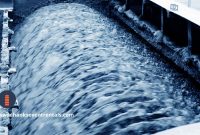Recycling Waste Using Water Treatment Technology
Recycling waste has become an essential part of creating a more sustainable and environmentally friendly future. With the rapid growth of industrialization and urbanization, managing waste efficiently has become one of the biggest challenges we face. One of the most innovative and effective ways to tackle this issue is by using water treatment technology to process waste, preventing environmental contamination and ensuring safe recycling practices.
In this guide, we will explore how recycling, waste management, and water treatment technology can work together to preserve our environment. We’ll cover the basics, delve into the processes, and offer practical tips on how individuals and businesses can adopt these technologies to become more eco-friendly.
1. Introduction to Waste Recycling
Waste recycling is the process of converting waste materials into new products, thereby reducing the need for raw materials and minimizing waste sent to landfills. With the world producing millions of tons of waste daily, it’s vital to adopt methods that help mitigate its environmental impact.
But not all recycling is the same. Certain materials, such as plastics, metals, and electronic waste, require specialized treatment to ensure they don’t release harmful toxins into the environment. This is where water treatment technology comes into play, particularly in industries and large-scale waste management operations.
Recycling, when done effectively, not only saves energy but also conserves natural resources and reduces pollution. By integrating water treatment technologies, waste recycling becomes safer and more effective, ensuring harmful substances are removed before disposal.
2. Understanding Water Treatment Technology
Water treatment technology refers to the processes used to improve the quality of water by removing contaminants and making it safe for various applications, such as drinking, irrigation, or industrial use. In waste recycling, this technology plays a crucial role in treating wastewater that results from the recycling process, ensuring that no harmful pollutants are released into the environment.
Common methods of water treatment include:
- Filtration: Removing solid waste particles from the water.
- Chemical Treatment: Using chemicals to neutralize harmful substances.
- Biological Treatment: Using microorganisms to break down organic pollutants.
When applied to waste recycling, these methods help ensure that the waste is not only recycled but also processed in an environmentally friendly manner.
3. The Intersection of Recycling and Water Treatment
Combining water treatment with waste recycling is an innovative approach to handling waste more effectively. Certain waste types, especially industrial waste, require water-based treatment methods to break down harmful chemicals or remove solid particles.
For example:
- Industrial wastewater from factories can be treated before the water is reused in the production cycle.
- Plastic recycling often generates wastewater, which can contain microplastics and chemicals that need to be filtered out.
- Electronic waste (e-waste) often involves cleaning and separating different materials, producing toxic wastewater that requires treatment.
By treating water and waste together, industries can ensure a sustainable recycling process that doesn’t contribute to further pollution.
4. Environmental Benefits of Waste Recycling with Water Treatment
There are numerous environmental benefits to recycling waste using water treatment technology. Some of the most significant include:
- Reduced Pollution: Water treatment helps remove harmful chemicals from waste, ensuring they don’t end up in rivers, lakes, or oceans.
- Conservation of Resources: By recycling waste, we reduce the need to extract raw materials, helping conserve natural resources.
- Energy Efficiency: Recycling often requires less energy than producing new materials from scratch, especially when integrated with efficient water treatment processes.
- Decreased Landfill Use: More recycling means less waste is sent to landfills, reducing the space needed for waste disposal and minimizing the harmful effects of landfill emissions on the environment.
5. Types of Waste That Can Be Recycled Using Water Treatment
Water treatment technology can be applied to a wide range of waste types, including:
- Plastic waste: Used in recycling processes to remove harmful chemicals and microplastics.
- Electronic waste (e-waste): Helps treat water used in separating different materials from electronic devices.
- Industrial waste: Treats wastewater generated by factories to ensure it doesn’t pollute local ecosystems.
- Agricultural waste: Treats runoff from farming activities, ensuring harmful chemicals like pesticides don’t contaminate nearby water sources.
By using water treatment alongside recycling methods, these waste types can be safely processed and reused, reducing environmental harm.
6. Challenges and Solutions in Water Treatment for Waste Recycling
While water treatment offers many benefits, there are also challenges to consider, including:
- High Costs: Water treatment technologies can be expensive to install and maintain, especially for small businesses.
- Energy Usage: Some treatment methods require significant energy, potentially offsetting the environmental benefits of recycling.
- Technological Limitations: Not all types of waste can be effectively treated with current water treatment technologies.
However, solutions are emerging. Governments are offering incentives for businesses to adopt water treatment systems, and technological advancements are making the processes more efficient and cost-effective. Investing in sustainable technology now can lead to long-term savings and environmental benefits.
7. Steps for Implementing Waste Recycling with Water Treatment
For businesses or municipalities looking to implement waste recycling using water treatment technology, here’s a simple step-by-step guide:
- Assess Waste Types: Identify the types of waste your organization generates and determine which ones require water-based treatment.
- Research Treatment Options: Look into available water treatment technologies, such as filtration, chemical treatment, or biological treatment, that best fit your waste types.
- Set Up Recycling Infrastructure: Establish a recycling system that integrates with your water treatment process. This may involve installing specific treatment facilities or outsourcing to companies that specialize in water treatment.
- Monitor and Maintain Systems: Regularly monitor the effectiveness of both your recycling and water treatment processes. Make adjustments as necessary to improve efficiency and reduce costs.
- Educate and Train Staff: Ensure employees understand the importance of water treatment in the recycling process and how to operate any relevant machinery or systems.
8. How Businesses Can Adopt Environmentally Friendly Recycling Practices
Businesses play a key role in reducing environmental waste. Here are some ways companies can incorporate environmentally friendly recycling and water treatment practices:
- Invest in Sustainable Technologies: Modern water treatment systems are more energy-efficient and effective than older models, making them a worthwhile investment.
- Partner with Waste Treatment Specialists: If setting up an in-house system isn’t feasible, businesses can collaborate with waste treatment companies that use environmentally friendly methods.
- Promote Recycling Culture: Encourage employees to participate in waste reduction efforts by providing accessible recycling bins, reducing single-use plastics, and organizing educational sessions on the importance of water treatment.
- Track Environmental Impact: Use metrics to track how much waste is recycled and how water treatment processes are reducing pollution. This data can be shared with stakeholders to demonstrate your company’s commitment to sustainability.
9. Practical Tips for Individuals to Contribute to Eco-Friendly Waste Recycling
You don’t have to be part of a big organization to make a difference. Here are some simple steps individuals can take to support eco-friendly waste recycling:
- Sort Your Waste: Separate recyclables from non-recyclables and make sure items are clean before placing them in recycling bins.
- Reduce Water Waste: Use water efficiently and avoid pouring hazardous substances (like chemicals or oils) down the drain.
- Support Businesses Using Green Practices: Choose products from companies that prioritize recycling and sustainable water management.
- Participate in Local Recycling Programs: Many communities offer programs that promote environmentally friendly recycling and water conservation. Get involved and encourage your neighbors to do the same.
10. Frequently Asked Questions (FAQs)
Q1: What types of waste are best suited for water treatment recycling?
Plastic waste, electronic waste (e-waste), industrial wastewater, and agricultural runoff are commonly treated using water-based recycling processes. These waste types often contain harmful chemicals or microplastics that water treatment can help neutralize.
Q2: Is water treatment expensive to implement in waste recycling?
While the initial setup cost for water treatment systems can be high, they often lead to long-term savings by reducing energy consumption, recycling valuable resources, and minimizing environmental penalties.
Q3: How does water treatment make waste recycling more environmentally friendly?
Water treatment removes harmful chemicals and pollutants from waste before it’s recycled or disposed of, ensuring that the recycling process doesn’t lead to additional environmental contamination.
Q4: Can individuals contribute to water treatment in waste recycling?
Yes! Individuals can reduce water pollution by properly disposing of chemicals and participating in community recycling programs. Supporting businesses that prioritize eco-friendly practices also helps.
Q5: What is the future of water treatment in waste recycling?
As technology advances, water treatment methods are becoming more efficient, making it easier and more cost-effective for businesses and municipalities to adopt. Innovations in this space will continue to drive eco-friendly waste management solutions.
Conclusion
Recycling waste using water treatment technology is a crucial step towards creating a more sustainable and environmentally friendly world. By understanding the processes and adopting the right systems, both businesses and individuals can contribute to a cleaner planet. As technology continues to evolve, the future of waste recycling will only become more efficient, offering hope for a greener tomorrow.



